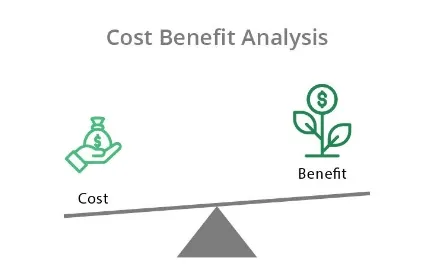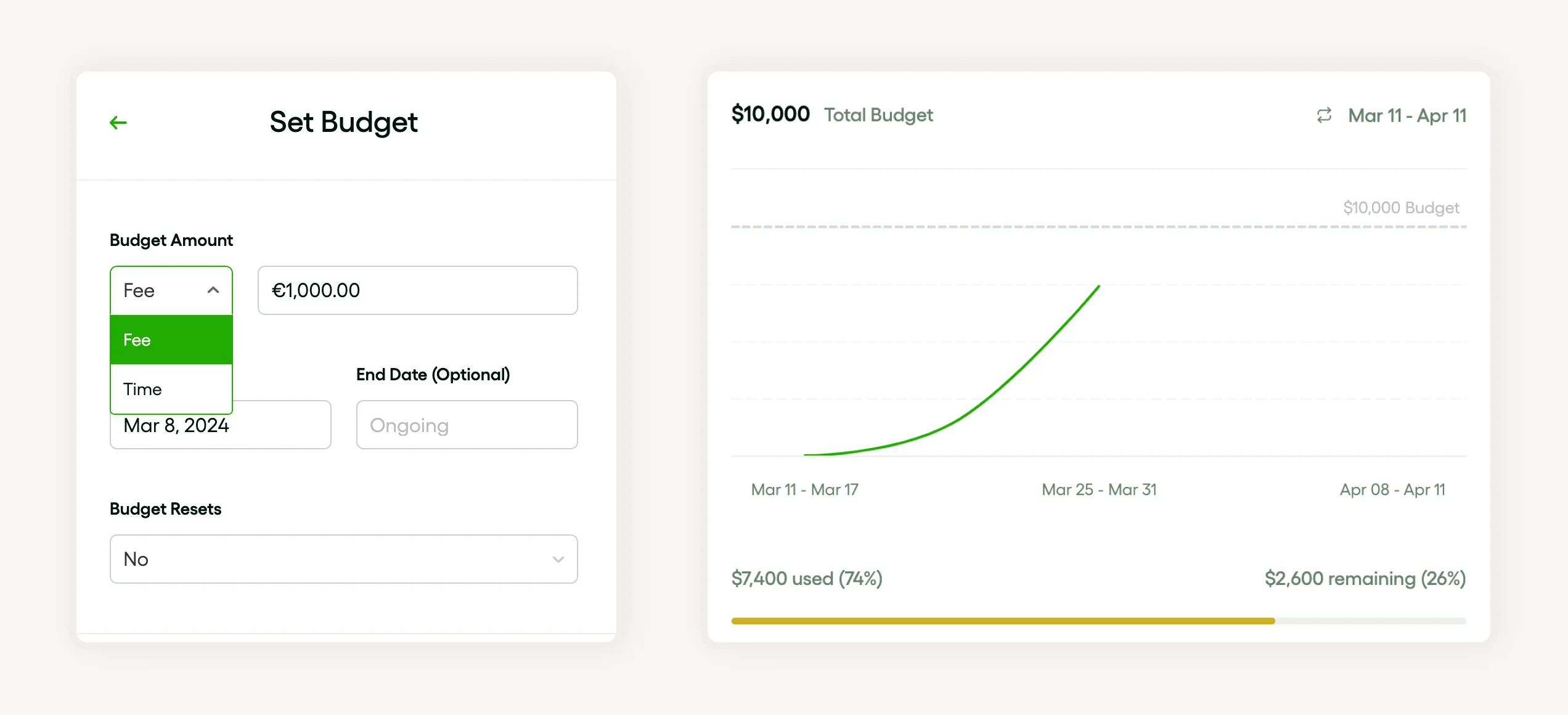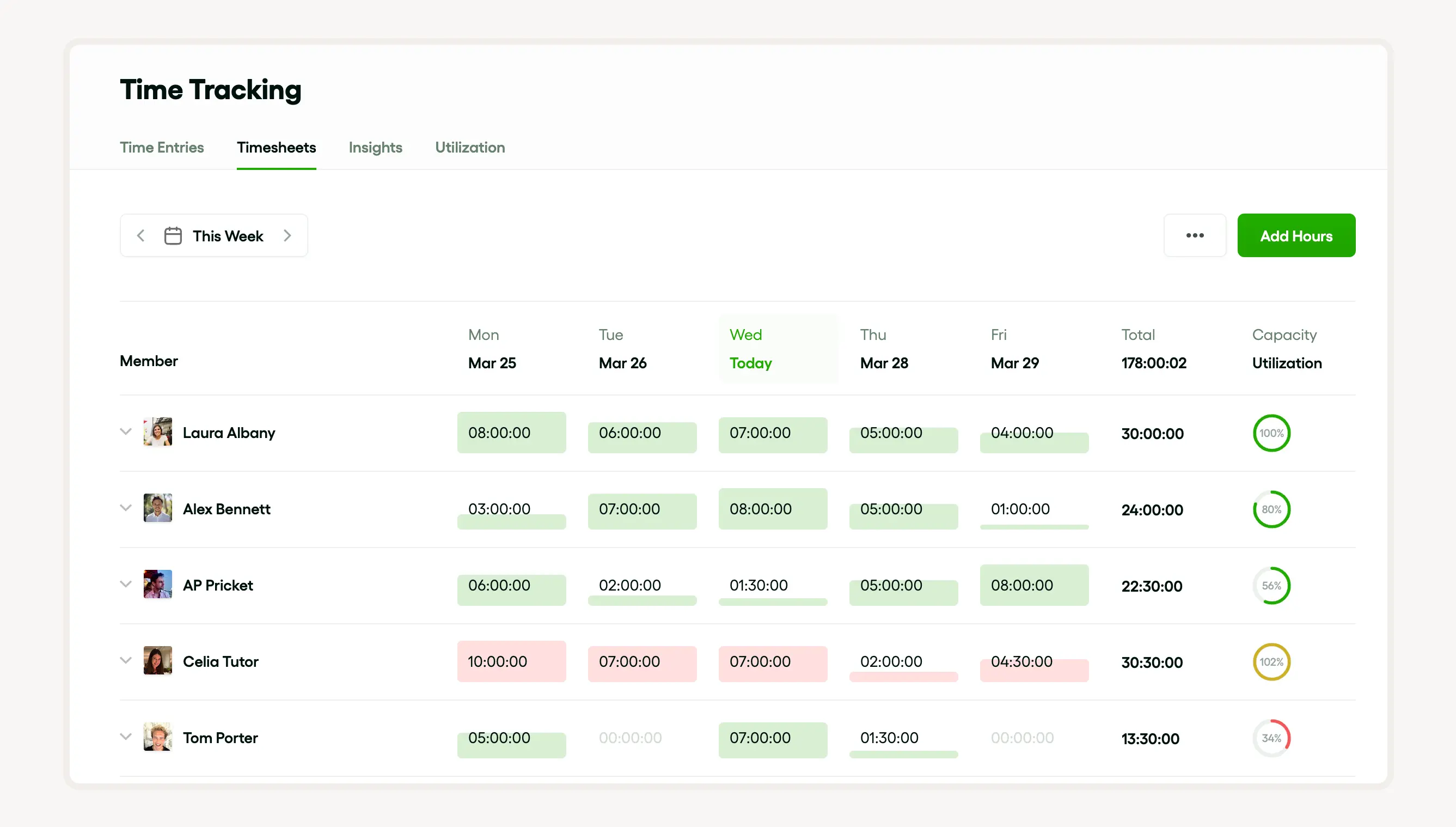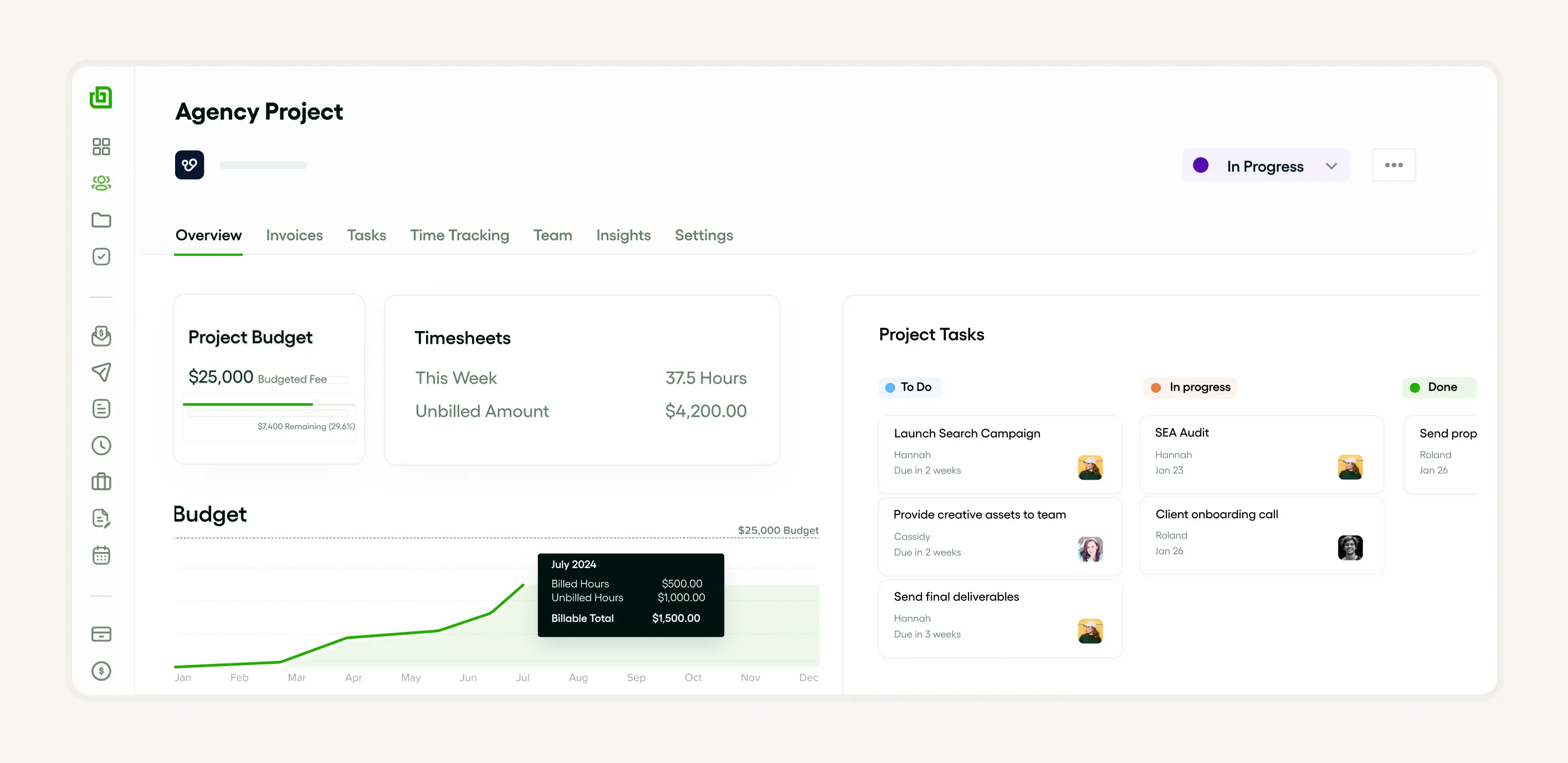There is no doubt that free cost-benefit analysis templates are effective tools in project management. Usually, they help in the following spheres:-
- Detailed cost analysis that provides a clear picture of direct and indirect costs
- Capital costs along with estimation of costs
It's a matter of fact that these templates also assist in measuring the return on investment and the net present value. What’s fascinating is they also facilitate project budgeting that makes it easier to maintain the benefit-cost ratio.
Overall, it is widely recognized that a cost-benefit analysis is an invaluable part of any project process. It’s fascinating how this drives data-informed decisions and maximizes profitability!
Understanding cost-benefit analysis
It's well known that cost-benefit analysis is a crucial component of project management. Interestingly, it involves the comparison of the projected costs and benefits of a potential project to evaluate its feasibility.

The best thing about this analytical method is it enables companies to estimate the expected return on investment. Consequently, cost-benefit analysis also assists in capital costs as well as project budgeting.
Definition and importance of cost-benefit analysis
It's obvious that cost-benefit analysis is a crucial aspect of project management that entails a systematic approach to calculating and comparing the benefits and costs of a project. What’s notable is this facilitates a clearer judgment in decision-making, considering the financial feasibility and the return on investment of the project.

Plus, it's significant to note that it helps in project cost estimation and balancing the project budgeting.
The importance of cost-benefit analysis lies in its ability to predict future project costs and project benefits, considering factors like net present value and benefit-cost ratio.
The cool thing about this is it distinguishes direct costs from indirect costs and enables detailed cost analysis. Hence, it's proven that cost-benefit analysis is critical for the successful completion of a project within budget.
Key components of a cost-benefit analysis
Bonsai is the ultimate project management tool, offering a single platform that caters to the diverse needs of modern businesses. It integrates client management, project tracking, financial oversight, and team collaboration, streamlining the entire project lifecycle.
It's worth noting that the key components of a cost-benefit analysis in project management are the:-
- Detailed estimation of the cost of the project
- The calculation of project benefits
- The calculation of the benefit-cost ratio

The key components of a cost-benefit analysis in Bonsai, focusing on setting up a budget, include identifying direct and indirect costs, such as labor, materials, and overheads. It's essential to estimate the total expected costs and compare them with the anticipated benefits, whether they are tangible, like revenue, or intangible, like customer satisfaction.
Establishing a framework for analysis is crucial, which involves defining goals and objectives and measuring and comparing benefits and costs using a chosen metric.
Inevitably, calculating the costs includes estimating both direct costs, such as labor and materials. It is important to mention that the benefits must also be quantified; whether they are tangible, such as revenue, or intangible, like customer satisfaction.
What’s remarkable is the benefit-cost ratio then provides the return on investment. Significantly, the net present value is also a crucial element in cost-benefit analysis.
Steps to conduct a cost-benefit analysis
To conduct a cost-benefit analysis, first define your project goals in detail to estimate the potential benefits. It is imperative to note that this connects to the project benefits, and net present value.
Next, one should prepare a detailed cost analysis that should comprise both direct costs such as materials and labor, and indirect costs like overheads.
Then, perform your analysis. Calculate the benefit-cost ratio by dividing total benefits by total costs.
Last but not least, conduct a feasibility study. Most importantly, verify if your project will provide a positive return within an acceptable time frame as well as if it aligns with your broader business goals.
Identifying costs and benefits
It is beyond question that successful project management critically involves a cost-benefit analysis to properly estimate project costs and predict potential project benefits.
Furthermore, a thorough feasibility study should address both the direct and indirect costs of the project. What’s more, it is crucial to realize that cost estimates also consider capital costs that could have a significant impact on the benefit-cost ratio. Don’t forget that the objective is to ensure the net present value of the project is positive. It’s just astonishing how this can be achieved with careful planning and estimation.
Assigning monetary value
It is beneficial to understand that in project management, assigning monetary value involves various steps such as:-
- Project cost estimation
- A detailed analysis of the cost
- Project budgeting
The noticeable thing is careful project cost estimation contemplates both direct and indirect costs, while the capital costs and potential project benefits are also examined as a part of the cost-benefit analysis.

Clearly, gauging the financial feasibility of a project involves determining the net present value along with understanding the return on investment.
The benefit-cost ratio – as part of a cost-benefit analysis, is identified so that it can be ensured the project yields desirable financial results. One thing is for sure: All these factors help in meticulous budget allocation and efficient management of project costs.
Comparing costs and benefits
It's a well-established fact that in project management, conducting a cost-benefit analysis is essential for understanding whether a project's benefits outweigh its costs.
What’s noticeable is this analysis includes direct costs such as project cost estimation and indirect costs that might not be initially evident. Key areas to consider are capital costs, cost estimates, etc.
It's crucial to be aware that tools such as net present value can be used to evaluate the profitability of a project by comparing the initial investment to the expected return on investment.
While project budgeting helps in allocating resources, The cool thing about a detailed cost analysis is it makes certain all possible expenses are covered.
Lastly, a feasibility study is performed to determine if a project is viable from a financial perspective. It involves analyzing:-
- Project costs
- Benefits of the project and other factors to assess whether a project should be pursued
Exploring free cost-benefit analysis templates
It is fair to say that several free cost-benefit analysis templates are available on the internet that aid in accurate project cost estimation and detailed cost analysis. There is no denying that these templates are quite beneficial in project management.
The noticeable thing about these templates is they typically provide sections for noting down direct costs, indirect costs, and project benefits. They are also useful in computing complex terms like net present value and benefit-cost ratio.
Bonsai
Bonsai provides an extensive collection of ready-to-use templates, including contracts, briefs, and proposals, tailored to a wide range of industries. With over 500+ templates available, you can easily find one that fits your specific needs. This vast selection simplifies the process of creating detailed, industry-specific documents, saving time and enhancing your professional workflow.

These templates are vetted by legal experts, ensuring they meet professional standards. Whether you're in design, marketing, consulting, or any other field, Bonsai's templates are customizable, allowing you to add your branding and offerings.
Smartsheet's cost-benefit analysis template
It is widely recognized that the Smartsheet Cost-Benefit Analysis Template is a powerful tool in project management. What's obvious is its utility lies in giving an in-depth detailed cost analysis and providing reliable cost estimates.

The best thing about this practical approach is it aids in efficient project budgeting and calculating the project cost estimation with ease.
It is important to mention that the template is perfect for undertaking a feasibility study, and, predictably, it helps establish the project benefits and quantify the return on investment.
The benefit-cost ratio and net present value derived from this template guide decision-making. It’s astounding how this ensures maximum profitability!
Template.net's professional cost-benefit analysis templates
It's no secret that at Template.net, we provide professional cost-benefit analysis templates suited for your project management needs.
Our templates aid in streamlining return on investment calculations, and project cost estimation to ensure you stay within your project budgeting constraints.
With features to evaluate direct costs, indirect costs, etc.; the good news is these tools offer a comprehensive financial assessment.
Microsoft Office's cost-benefit analysis worksheet
It's a well-documented fact that undertaking a cost-benefit analysis within Microsoft Office's Project Management tool allows for carefully calculated project cost estimation.
Simultaneously, this process evaluates the benefit-cost ratio, as well as indirect and direct costs.
The great thing about the feasibility study feature is it enables a detailed cost analysis that considers both the net present value and potential project benefits. Thus, it’s surprising how exploiting the functionality of Microsoft Office can dramatically improve the efficiency and accuracy of your cost-benefit analysis!
How to use cost-benefit analysis templates
It stands to reason that using cost-benefit analysis templates involves evaluating the cost estimates for a given project including direct costs like capital costs and indirect costs. The fantastic thing about the feasibility study is it highlights the project benefits, like the projected return on investment, against project costs to achieve a benefit-cost ratio.
It should be acknowledged that this plays a crucial role in project management for project budgeting. A detailed cost analysis can provide the net present value. Undoubtedly, handling these components of cost-benefit analysis increases the chances of making informed decisions regarding project execution.
Customizing templates to fit your needs
It's important to highlight that project management templates can be effectively customized to carry out a detailed cost analysis and accurately predict both direct and indirect costs.
Iterations can include:-
- Performing cost-benefit analysis
- Estimation of the project costs
- Calculation of the benefit-cost ratio
It is safe to say that these adaptations help in creating a realistic project budgeting. The remarkable thing about customization is it can also focus on understanding project benefits. What’s worth mentioning is it includes assessing net present value and return on investment.
One thing is clear: Rigorous cost estimates and efficient project controls are thus key to customizing templates. This provides a comprehensive overview of project costs.
Interpreting results from the template
There is no doubt that the cost-benefit analysis reflects the balance between the project costs and project benefits, which helps in project management decision-making.
Particularly, it's evident that it offers insights into the return on investment and net present value. What’s amazing is the benefit-cost ratio derived from the analysis points toward the financial soundness of the project that supports the project cost estimation process.
It is significant to note that these cost estimates help in effective project budgeting.
Real-world examples of cost-benefit analysis
It's indisputable that cost-benefit analysis plays a pivotal role in project management. For instance, a business organization evaluating the viability of a new product launch will use cost-benefit analysis to estimate project costs and project benefits.
One thing is for certain: The use of feasibility studies in construction industries determines the net present value and detailed cost analysis of a building project.
Similarly, in government projects like infrastructure development; the best thing about cost-benefit analysis is it aids in project budgeting by including direct and indirect costs and evaluating them against the benefit-cost ratio.
Through this, what’s fascinating is the organization can make informed decisions about whether to pursue the project or not.
Cost-benefit analysis in project management
It's an undeniable truth that cost-benefit analysis in project management is a crucial tool used for evaluating the pros and cons related to the project. It involves a detailed cost analysis too. It comes as no surprise that a feasibility study is conducted to assess the practicality of the project, and alongside the cost-benefit analysis, helps in effective project budgeting.
In project management, a cost-benefit analysis using Bonsai involves a systematic evaluation of the project's financial aspects. It starts with identifying all project costs, from resources to labor.

This analysis helps determine if a project justifies the investment, guiding managers to make informed choices that align with the company's financial objectives.
It is important to note that the benefit-cost ratio, expressed in monetary terms, to its costs, also calculated in monetary terms, should be favorable to proceed with the proposal.
Therefore, inarguably, an in-depth understanding and application of cost-benefit analysis methodology lay the foundation for successful project management.
Cost-benefit analysis in business decision making
It's a well-established fact that cost-benefit analysis is used to assess the viability of a business decision by considering all potential costs and revenues.
Generally, it involves identifying project costs and benefits, and then comparing them to determine the return on investment. The fascinating thing is indirect and direct costs are weighed against the net present value of benefits.
Key elements in this paradigm include project cost estimation, and budgeting of the project. What’s worth noticing is that these help in determining the benefit-cost ratio.
Plus, it is worth noting that it lends itself to conducting a feasibility study too.
Best practices for conducting a cost-benefit analysis
It's crucial to realize that when conducting a cost-benefit analysis, it is crucial to adopt a systematic approach to enable effective project management.
Initially, estimate project costs and benefits, including direct costs as well as indirect expenses. The great thing about establishing accurate cost estimates in the early stages is they will prevent budgeting dilemmas down the road.
Afterward, compute the benefit-cost ratio and net present value. It’s staggering how this detailed cost analysis will offer a clear return on investment projection!
Definitely it would help decision-makers evaluate the project's viability and profitability effectively.
Ensuring accurate data collection
It is widely recognized that accurate data collection is pivotal in project management. A rigorous process may involve a detailed cost analysis along with capital costs.
Remember, this analysis is crucial in creating accurate cost estimates and effectively managing the project budget. To ensure the financial feasibility of a project, a cost-benefit analysis can be conducted.

What's interesting is this analysis uses the benefit-cost ratio to measure the return on investment. It's important to observe that it considers the net present value of the project benefits. Impressively, as a result of that it offers a comprehensive understanding of the project costs and potential gains.
Considering intangible costs and benefits
It's interesting to point out that while conducting a cost-benefit analysis in project management, intangible costs and benefits often come into play.
They might not directly affect the project budgeting or project cost estimation but can significantly impact the overall return on investment and net present value.
Commonly, intangible costs could include factors like a decrease in employee morale or loss of customer goodwill due to project undertaking. Obviously these are indirect costs and cannot be quantified easily.
On the other hand, it is evident that intangible benefits might come in the form of increased brand reputation or improved team skills. The benefit-cost ratio also takes into account these intangible aspects.
Although challenging, it is beneficial to remember that recognizing and including intangible costs and benefits in detailed cost analysis is crucial for a thorough feasibility study.
Choosing the right cost-benefit analysis tool
It's obvious that selecting the right cost-benefit analysis tool is crucial in project management.
Tools like net present value help to understand the profitability and return on investment of a project. The noticeable thing about this tool is it aids in aligning the project benefits versus project costs and gives an understanding of the benefit-cost ratio.
Another important analysis tool is project cost estimation which is necessary for project budgeting.
Features to look for in a cost-benefit analysis tool
It's beyond dispute that when looking for a cost-benefit analysis tool, some essential features can make a significant difference. It deserves to be highlighted that these must include detailed cost analysis that considers both direct and indirect costs, as well as capital costs.
The noticeable thing is the tool should enable a robust feasibility study with an accurate benefit-cost ratio, which takes into account project benefits. Evidently, this ensures a realistic return on investment forecast.
It is crucial to highlight that the tool should be equipped to calculate the net present value too.
Review: Excel as a cost-benefit analysis tool
It's well known that Excel is a versatile tool that efficiently facilitates cost-benefit analysis in project management. It enables the following things:-
- Estimation of project costs
- Measurement of return on investment
What’s worth mentioning is that the tool incorporates aspects such as capital costs, direct and indirect costs in the overall project costs. By helping keep track of project benefits and costs, undoubtedly, Excel proves beneficial in addressing the financial aspects of projects.
Review: Google Sheets as a cost-benefit analysis tool
Google Sheets is an effective tool for project management, particularly, in conducting a cost-benefit analysis.

It is imperative to note that it aids in the detailed cost analysis of direct costs, along with calculating net present value and return on investment.
The surprising thing about Google Sheets is it also provides features for:-
- Project budgeting
- Feasibility study
- Determining the benefit-cost ratio for any project
The cool thing about this tool is damage done due to capital costs can be mitigated using it. What's worth highlighting is it provides a comprehensive overview of project expenses. Plus. It helps in maintaining a balanced project financial structure.
Conclusion: maximizing the value of cost-benefit analysis
One thing is proven: In project management, maximizing the value of cost-benefit analysis involves careful project cost estimation and detailed cost analysis of both direct and indirect costs. It is safe to say that this provides a clear picture of the project costs against project benefits.
What’s remarkable is it aids in making feasible project budgeting, ultimately enhancing return on investment. Not only does this method provide cost estimates, but it also goes further to reveal:
- The feasibility study of the investment.
- Probable steps to be taken to minimize expenditure
Hence, cost-benefit analysis should be fully utilized to optimize project outcomes.






